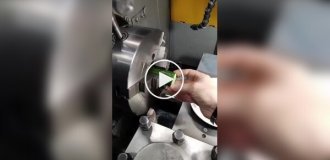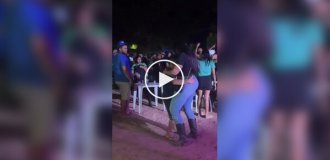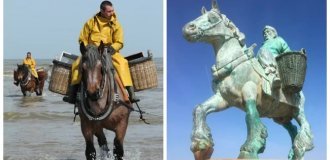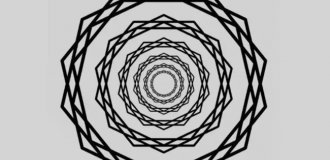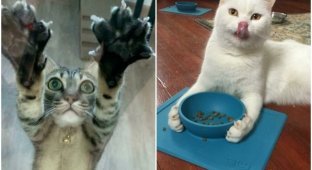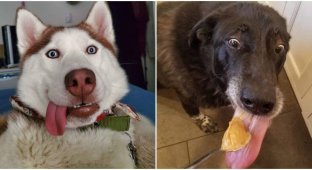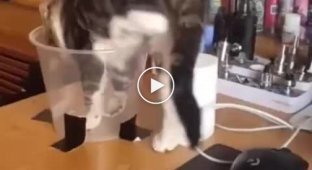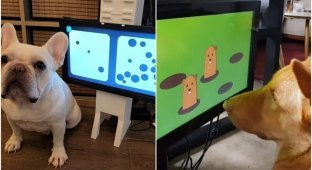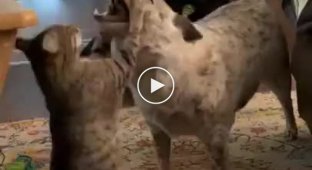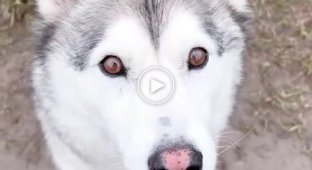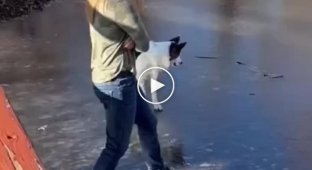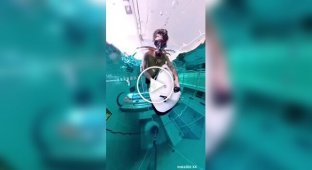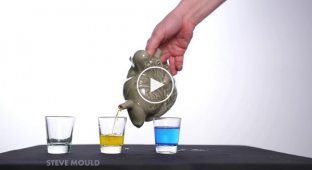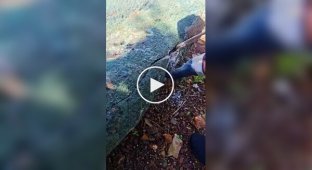Why don't cats and dogs recognize themselves in the mirror? (7 photos)
Many owners of cats and dogs have probably noticed that their dogs do not recognize themselves in the mirror and are indifferent to the reflection. It turns out that there is even a series of scientific studies on this issue. 
How great it would be if animals could talk! You approach the cat and ask it: “Do you have self-awareness? “, and she answers: “yes.” And that's it, the issue is resolved! But there is an insurmountable language barrier between us, so researchers have to try their best to understand whether our pets are self-aware. 
Maybe the cat doesn’t understand who he is. But he knows exactly how great he is!
First of all, cats and dogs were tested using the classic mirror test. It was invented 50 years ago, and its completion is considered the most convincing evidence of self-awareness. The salt of the test is as follows: a speck of odorless paint is applied to the sleeping animal. Moreover, it is applied to a place where the animal is unable to see it on its own. And then the animal is placed in front of a mirror and observed. 
Scheme for passing the magpie mirror test.
If a creature looked at its reflection, discovered a speck and tried to erase it, then it realized that it saw itself in the mirror, and not an animal identical to itself. We now know that the test is tested by children over 1.5 years of age, adult great apes, most dolphins, some fish, birds and even ants. But cats and dogs don’t. Are they really dumber than ants? 
Scientists don't think pets are stupid either. Therefore, they assumed that reflection was simply not informative enough for animals. Both cats and dogs live in a world of smells. For them, an animal is not only an image, but also a unique scent. And the mirror doesn't smell of anything. 
Dog sniffers are so good that they can detect not only contraband on airplanes, but also detect changes in the body’s biochemistry. For example, trained dogs are able to detect some forms of cancer by smell.
In 2009, Mark Bekof, a professor of ecology from New York, decided to conduct an interesting, but slightly disgusting experiment. He collected the yellow snow remaining after walking with the dog and moved it closer to the marks of other four-legged animals. And when sniffing these heaps, Jethro, his dog, spent practically no time. It only took a few breaths for him to realize that these were his marks. But Jethro showed more attention to the tracks of other dogs. 
Obviously, the dog perfectly distinguished his pheromones from the smells of other dogs. And drawing the “I-others” boundary is an important criterion for the presence of self-awareness. But it cannot be argued that dogs become aware of themselves on the basis of this small experience. For a study of this kind to be considered relevant, it is necessary to study the behavior of several dogs at once, and to do this in controlled conditions, and not on the streets with millions of interesting things and smells! 


